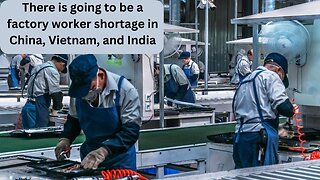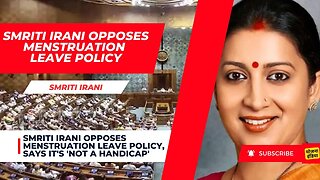India and women in the workforce
India and women in the workforce
In most countries, as their economies develop, more women enter the workforce. This is a pattern that repeated in China, Japan, and South Korea. Upon reaching a certain level of wealth, developed economies than began to experience a decrease in female labor participation as women have the option to stay at home or pursue higher education.
India’s female labor participation rate hit its peak in 2000 at 31%. Last year, it was 24%. It is among the 12 lowest in the world. However, India never truly hit the level of industrialization and modernization in the three countries I mentioned. India has yet to climb out of the ranks of lower middle-income countries. The GDP per capita in India is one fifth of China’s. So this begs the question: why have women withdrawn from the work place in the last two decades in India?
Government officials in India will argue that the data is not valid because the rate does not fully capture women involved in unpaid domestic work like collecting firewood, cooking, and tutoring. They would argue this constitutes productive work. While this is indeed productive, I would argue that we are talking about women that are employed outside of the household, contributing income to the household.
India has made great strides. The female literacy rate has increased from 54.2% in 2001 to 70.3% in 2022. Education is valued in women and increases their marriage prospects in India.
The Indian female participation rate of 31% contrasts with other countries. Bangladesh has a rate of 38% last year versus 28% in 2000. In fact, the GDP per capita surpassed India in 2019. This may be partly due to looser labor laws which have allowed aggressive factory expansion, as well as a lack of strong caste rules that encourage social conformity.
Economists attribute this to weak job creation and a deeply conservative culture.
India added zero net new job in the past decade even though it is the world’s fastest growing major economy.
Increasing the female labor-force participation rate would lead to huge increases in GDP.
There are only 38 million women in paid employed in India last year versus almost ten times as many men at 368 million.
In parts of India, jobs are in short supply. Many jobs disappeared during the pandemic and never returned.
The biggest employer in India is agriculture. Jobs in this sector has disappeared in recent decades as the industry becomes more mechanized. Despite this, I believe India needs to continue to modernize its agriculture, despite worker displacement. I would argue that India needs to shift its emphasis to manufacturing, especially in coastal cities where it should also upgrade its infrastructure. The world is looking for manufacturing alternatives to China.
There are a lot of opportunities currently as companies look to de-risk from China and add manufacturing capacity in countries in Asia that are more hospitable to the west. We’ve previously discussed the need for India to upgrade and improve its infrastructure, including its rails, ports, and road system. Perhaps equally important is to bring more Indian women into the workforce. However, this butts heads with some more conservative cultural elements in Indian society and culture. I believe that households, and husbands, will appreciate their wives working outside the house when they see just how much women can earn. I believe manufacturing wages can be equal or greater to what women can earn in the service sector. In addition, I believe manufacturing is the path forward for India to increase its GDP per capita.
Works Cited:
https://www.wsj.com/world/india/india-economy-women-work-labor-46bfb0f0?mod=hp_lead_pos7
Tags:
indian economy, india economy, india, india economic growth, future of indian economy, economy of india, india gdp growth, indian economy 2023, indian economy growth, growth of indian economy, india gdp, economy, india gdp growth 2023, india gdp 2023, india economy growth, india economy ranking, india's economy, india 5th largest economy, gdp of india, indian economy problem, india becomes fifth largest economy, friendshoring, friend-shoring, what is friendshoring, friendshoring yellen, janet yellen friendshoring, friendshoring trade, yellen friendshoring, meaning of friendshoring, friendshoring janet yellen, what does friendshoring means, friend-shoring supply chain, friendshoring can be good and bad. here's why, how friendshoring is deepening india-us ties, friends shore
-
 7:39
7:39
The Last Capitalist in Chicago
9 months ago $0.02 earnedThere is going to be a factory worker shortage in China, Vietnam, and India
132 -
 2:25
2:25
Government Scheme
5 months agoSmriti Irani Opposed Paid Period Leave|Mensuration not a Handicap #yojanaindia #workingwomens #india
2 -
 1:07:42
1:07:42
kushalmehra1981
1 year agoFinancial Inclusion Of Women In India
6 -
 1:24
1:24
ZoominTVNews
5 years agoWhy companies in India need women to be successful
8 -
 10:42
10:42
StrangeInvestigations1
1 year agoShould Women be in the Workforce?
3 -
 1:03
1:03
JTN2020
10 months agoPercentage of women in the workforce hits all-time high in June
107 -
 1:09
1:09
Mr Producer Media
2 years agoKamala: American Economy Doesn’t Work For Women
31928 -
 0:59
0:59
SWNS
1 year agoWomen who started their own business report an improvement in work-life balance
18 -
 7:01
7:01
Music & Funky Moments
1 year agoTop 10 Richest women in india
1 -
 3:55
3:55
KTNV
4 years agoWomen in the Trade Industry
9